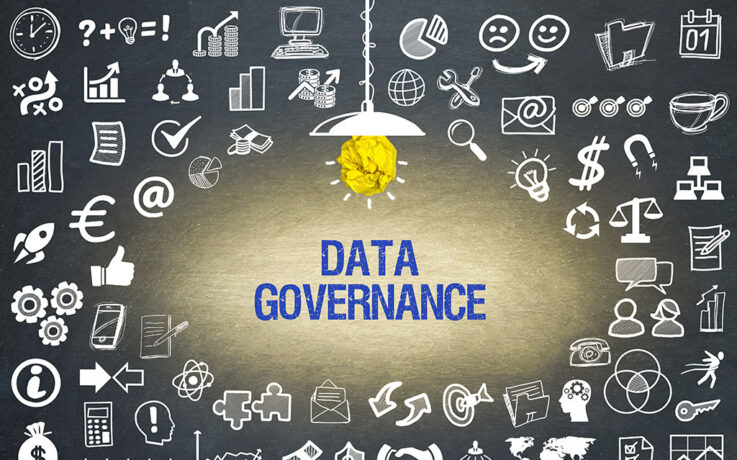Does healthcare have anything to learn from military strategies?
In his book “The Bomber Mafia,” Malcolm Gladwell describes how a group of World War II innovators sought to change wartime bombing tactics from broad-based destruction strategies to precision targeting of an adversary’s production capabilities. It is a great book that nicely illustrates how difficult it is to drive a paradigm shift, even one that saves lives.
The health and life sciences industries are facing a similar paradigm shift today. Traditional methods of developing novel therapies have relied on population-based approaches to diseases. But Industry 4.0 capabilities – artificial intelligence (AI), genomic sciences, Internet of Things (IoT) devices, cloud technologies, and more – are unlocking new opportunities for how we understand and treat medical conditions.
The Increasing Role of Precision
Gladwell’s book emphasizes innovations in precision for shifting the existing bombing paradigm. Today, the medical ecosystem sits at a precision transformation as well. Three forces – growing data volumes, better computational technologies, and advancements in biological sciences – are creating a rich landscape of innovation opportunities. Consider two examples:
- Over 340 products that include AI have been reviewed by the FDA, and hundreds more are already queued for review. These solutions all have one thing in common: leveraging data and AI algorithms to increase the precision of diagnostics and therapies. The market for analytics like this in health and life sciences is growing at over 25% a year, and RBC Capital has estimated that 30% of the world’s data is now related to healthcare — growing faster than any other industry.
- The COVID-19 vaccines you may have received from Pfizer-BioNTech were based on synthetic mRNA technologies using lipid nanoparticles. The nanotechnology – operating at a whole new level of precision scale – was critical to being able to deliver mRNA un-degraded into cell proteins. This precision-based approach is now being used for new treatments for influenza, shingles, and many other diseases.
So what does a transition towards greater precision mean for health and life sciences companies? We see three broad imperatives for organizations looking to lead in a world of precision medicine and data-driven operations.
1. Corporate Strategy & AI
Business strategies need to reflect that health and life sciences businesses are competing in an information economy. AI is changing:
- WHAT companies provide (e.g., targeted drugs; new regenerative medicine applications with 3D printed organs and prosthetics; novel cell and gene therapies based on gene editing; computationally designed antibodies; AI-driven diagnostics; evidence-based therapies; medical devices with embedded AI).
- HOW they provide them (e.g., novel data collection and curation; synthetic research arms; AI-driven drug design; predictive disease modeling; AI-based clinical decision support; automated diagnostics; remote patient monitoring; AI-assisted robotic surgery; clinical trial recruitment modeling and prediction; brain-computer interfaces supporting rehabilitation; new options for driving health outcomes, quality, safety, profitability, and patient engagement).
Since precision insights are fueled by excellent data, these business strategies are increasingly reflecting digital transformation as a priority. For example, data-driven companies take process automation seriously – it not only improves productivity and quality, but it also standardizes data collection. Building on this, market leaders are pursuing:
- Strategies and performance management plans that explicitly identify and measure how precision operations drive competitive differentiation and growth.
- Product and service offerings (e.g., product management roadmaps) that incorporate precision insights as key drivers of value creation with customers.
- Organizational development plans that identify a) key business process automation opportunities, and b) people development plans covering the breadth of skills needed for a data-driven operating posture.
- Data strategy and governance programs that address growing data volumes, depth, timeliness, quality, transparency, and actionability.
2. Technology & AI
Technology roadmaps are critical. Every health and life sciences organization needs a well-conceived enterprise architecture that can support a data-driven operating model and unique market value:
- Developing clear “as-is” and “to-be” enterprise architecture designs that align to the business strategy and unique precision characteristics of the organization
- Accommodating AI models that span both central computing architectures and autonomous edge-computing deployments (e.g., hardware chips optimized for federated AI computations and low-power consumption).
- Rapidly integrating new data sources and an increasing collection of interconnected devices that need to exchange data across networks and systems.
- Establishing and managing great “sources of truth” for the organization that provide confidence and trust in the organization’s data assets.
- Effectively deploying analytical insights into line-of-business settings, including no-code / low-code development solutions.
3. Leadership, Culture & AI
Leaders cultivate data-driven cultures. Despite talented people with good intentions, company cultures do not always promote data-driven work. For leaders looking to leverage AI and data as a differentiator, focus areas should include:
- Assessing existing barriers to data-driven approaches and insights within the organization’s current culture.
- Creating increased transparency and employee empowerment around data.
- Evoking discussion and collaboration across business, clinical and technology leaders around how analytical insights – designs, simulations, decision support recommendations – can best be incorporated into operations.
- Evaluating and monitoring the safety, efficacy, and appropriateness of AI-driven insights, especially when analytical models may be sourced from 3rd parties.
- Encouraging and rewarding innovation – even failures – to demonstrate the value being placed on discovering new paradigms for the organization.
Of course, “precision” is not the only trend driving medical innovation today. And technologies such as CRISPR are demonstrating how broad-based innovations can be applied with high precision as well. But AI’s role is clear: in the war against disease, the soldiers, their military units, and their smart weapons are all increasingly leveraging AI.
 Jason Burke | July 14, 2022
Jason Burke | July 14, 2022


